The mathematisation of science is considered to be one of the principle defining characteristics of the so-called scientific revolution in the seventeenth century. Knowledge presentation on the European, medieval universities was predominantly Aristotelian in nature and Aristotle was dismissive of mathematics. He argued that the objects of mathematics were not real and therefore mathematics could not produce knowledge (episteme/scientia). He made an exception for the so-called mixed disciplines: astronomy, geometrical optics, and statics. These were, however, merely functionally descriptive, and not knowledge. So, mathematical astronomy described how to determine the positions of celestial bodies at a given point in time, but it was non-mathematical cosmology that described the true nature of those celestial bodies. Knowledge production and knowledge acquisition was, for Aristotle and those who adopted his philosophy, non-mathematical.
With just a relatively superficial examination, it is very clear that the new knowledge delivered up in astronomy, physics etc in the seventeenth century was very mathematical, just consider the title of Newton’s magnum opus, Philosophiæ Naturalis Principia Mathematica (The Mathematical Principles of Natural Philosophy), something major had changed and two central questions for the historian of science are what and why?
When I first started learning the history and philosophy of science several decades ago, there was a standard pat answer to this brace of questions. It was stated that there had been a change in philosophical systems underlying knowledge acquisition, Aristotelian philosophy and been replaced by a mathematical neo-Platonic philosophy; Plato had, according to the legend, famously the dictum, May no one ignorant of Geometry enter here Inscribed above the entrance to his school, The Academy. The belief that the mathematisation of science was driven by a Platonic renaissance was probably strengthened by the fact that the title page of Copernicus’ De Revolutionibus, the book that supposedly signalled the start of the scientific revolution, carried the same dictum. In fact, there is no evidence in Greek literature from the entire time that The Academy was open that the dictum existed. It was first mentioned by John Philoponus (c. 490–c. 570) after Justinian had ordered The Academy closed in 529. De Revolutionibus is also not in anyway Platonic.
To be fair to the proposers of the Plato replaced Aristotle thesis, Plato’s philosophy was definitively more mathematical than Aristotle’s and there was a neo-Platonic revival during the Renaissance, but it was more the esoteric and mystical Plato rather than the mathematical Plato, as I’ve already outlined in an earlier episode in this series.
So, what did drive the mathematisation? As already explained in explained in earlier episodes there were major expansions and developments in astronomy, cartography, surveying, and navigation starting in the fifteenth century during the Renaissance. All four disciplines demanded an intensive use of geometry and especially trigonometry. This can be seen in the publication of the first printed edition of Euclid by Erhard Ratdolt (1442–1528) in 1482, which was followed by significant printed translations in the vernacular throughout Europe.
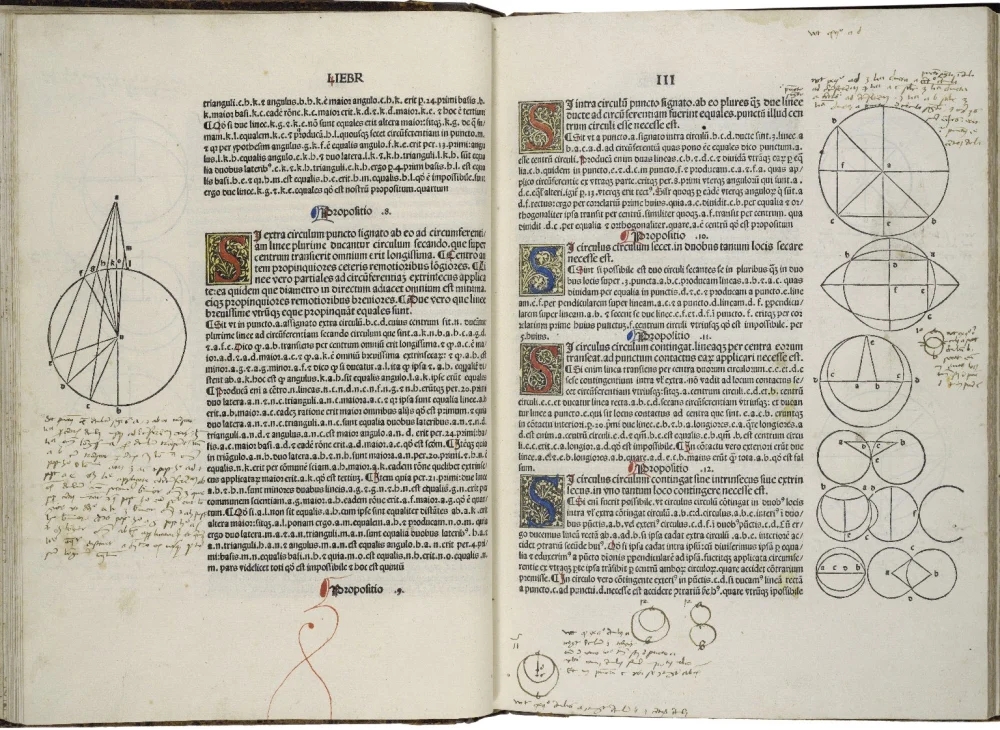
Folger Shakespeare Library Digital Image Collection
Source: Wikimedia Commons
In trigonometry, Johannes Petreius (c. 1497–1550) published Regiomontanus’ De triangulis omnimodis (On Triangles of All Kinds), edited by Johannes Schöner, in 1533. This was the first almost complete account of trigonometry published in Europe, the only thing that was missing was the tangent, but Regiomontanus had included the tangent in his earlier Tabula directionum, written in 1467 but first published in print in 1490. Regiomontanus’ trigonometry was followed by several important volumes on the topic during the sixteenth century.
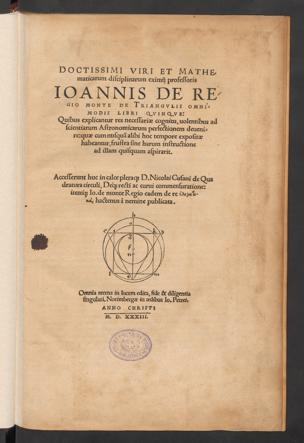
These areas of mathematical development were however for the Aristotelian academics at the universities not scientia and the mathematical practitioners, who did the mathematics were not considered to be academics but mere craftsmen. However, the widening reliance on mathematics in what had become important political areas of Renaissance society did much to raise the general status of mathematics.
Another area where a mathematical subdiscipline was on the advance was algebra, the basis for the analytical mathematics that would become so important in the seventeenth century. Already introduced in the twelfth century, with the translation of al-Khwarizmi’s text on the Hindu-Arabic number system into Latin, Algoritmi de numero Indorum along with the book that gave algebra its name, al-Kitāb al-Mukhtaṣar fī Ḥisāb al-Jabr wal-Muqābalah. It initially had minimal impact. However, reintroduced in the next century by Leonardo Pisano, with his Liber Abbaci, and although the acceptance was slow, only beginning to accelerate with the introduction of double entry bookkeeping at the end of the thirteenth century and beginning of the fourteenth. By the sixteenth century many abbaco schools (scuole d’abbaco or botteghe d’abbco) had been established throughout Europe teaching the Hindu-Arabic number system and algebra to apprentices using Libri d’abbaco, (abbacus books). In fact, the first ever printed mathematics book was an abbacus book, the so-called Treviso Arithmetic or Arte dell’Abbaco written in vernacular Venetian and published in Treviso in 1478.
Once again, however, what was being taught here was not an academic discipline, which could generate scientia, but commercial arithmetic, very useful for an increasing commercial Europe dependent on extensive trade but not for the acquisition of academic knowledge. This began to change slowly in the sixteenth century beginning with the Summa de arithmetica, geometria, proportioni et proportionalita of Luca Pacioli (c. 1447–1517) published in 1496, still a book of practical mathematics and so not academic, but one which contained the false claim that there could not be a general solution of the cubic equation. This led on to Scipione del Ferro (1465–1526) discovering such a solution, Tartaglia (c. 1499–1557) rediscovering it and Gerolamo Cardano (1501–1576) seducing Tartaglia into revealing his solution and then publishing it in his Ars Magna. All of which I have outlined in more detail here. Cardano’s Ars magna, published in Nürnberg in 1545 by Johannes Petreius, has been called the first modern mathematics book, a term I don’t particularly like, but it did bring algebra into the world of academia, although it still wasn’t considered to be knowledge producing.
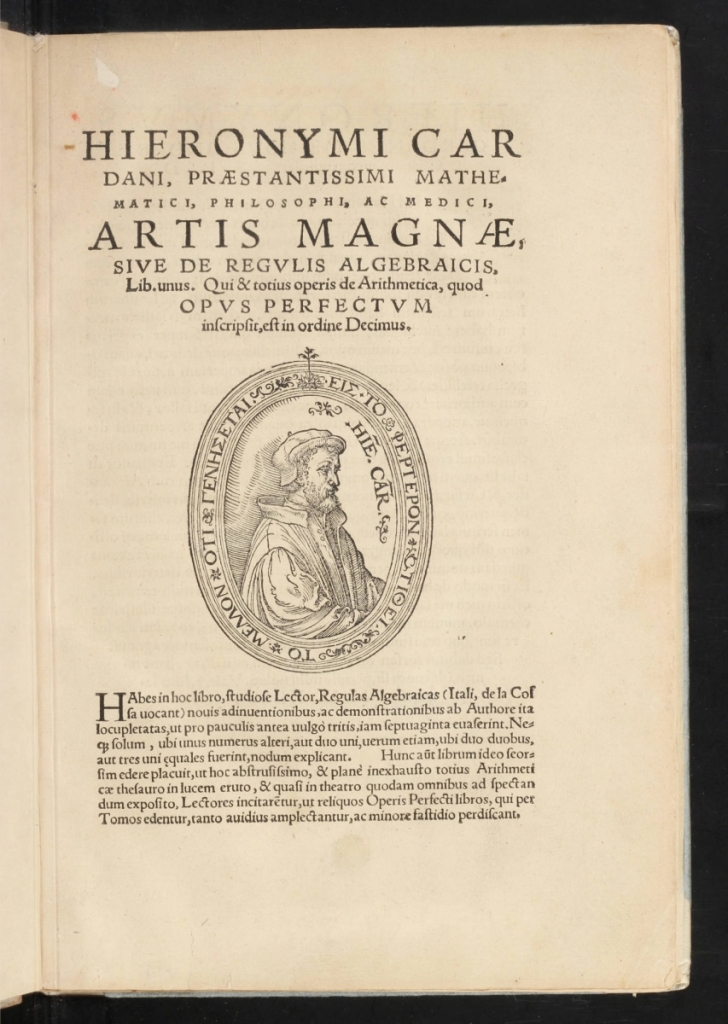
So, how did the change in status of mathematics on the universities come about and who was responsible for it if it wasn’t Plato? The change was brought about by Italian, humanist scholars in the sixteenth century and the responsibility lies not with a philosopher but with a mathematician, Archimedes.
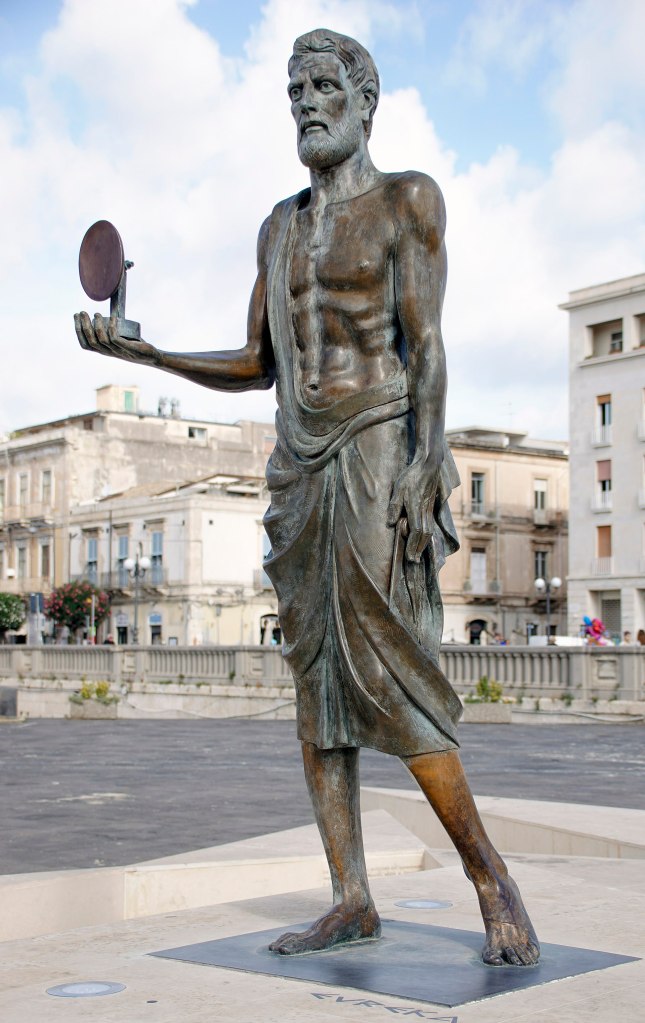
Archimedes of Syracuse (c.287–c. 212 BCE) mathematician, physicist, engineer, and inventor is one of the most well-known figures in the entire history of science. Truly brilliant in a range of fields of study and immersed in a cloud of myths and legends. He is famous for the machines he invented and a legend for alleged machines he constructed to defend his hometown of Syracuse against the Romans. It is these war machines and the myth of his death at the hands of a Roman soldier that dominate the accounts of his life all written posthumously in antiquity. His mathematical work, which is what interest us here, remained largely unknown in antiquity. There only began to become known in the Early Middle Ages but, although translated into Arabic by Thābit ibn Qurra (836–901) and from there into Latin by Gerard of Cremona (c. 1114–1187) and again directly from Geek into Latin by William of Moerbeke (c. 1215–1286) and once more by Iacobus Cremonnensis (c. 1400–c. 1454), his work received very little attention in the Middle Ages.
Beginning, already in the fifteenth century, Renaissance humanist began to seriously re-evaluate the leading Greek mathematicians, in particular Euclid and Archimedes. Euclidian geometry was playing a much greater role in the evolving optics, in particular linear perspective, than it had ever played on the medieval universities. This led, as already noted above, to the publication of the first printed edition of The Elements, by Erhard Ratdolt, in 1482. Interestingly, the manuscript that Ratdolt used for edition was one that Regiomontanus (1436–1476) had brought with him to Nürnberg, where he established the world’s first scientific published endeavour, intending to publish it himself, as he announced in his published catalogue of intended publications. Unfortunately, he died before he could print most of this extensive catalogue of scientific and mathematical texts.
This catalogue also included a manuscript of the works of Archimedes in the Latin translation of Iacobus Cremonnensis, which also fell foul of the Franconian mathematician’s early death. This manuscript would eventually be published in Basel, together with a Greek original brought from Rome by Willibald Pirckheimer (1470–1530), in a bilingual edition of the works edited by the Nürnberger theologian, humanist, and mathematician, Thomas Venatorius (1488–1551), in 1544.
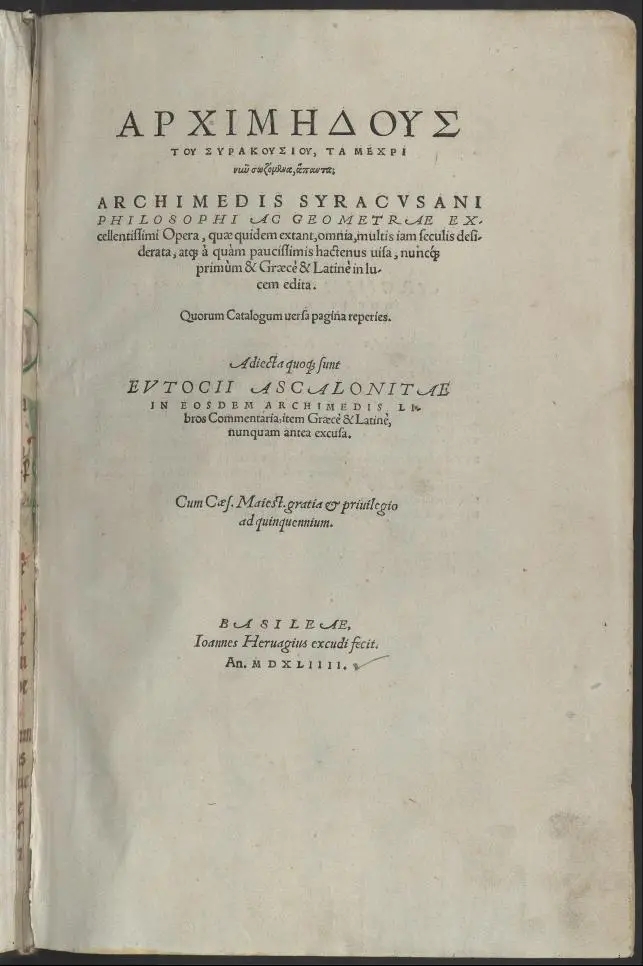
The Italian astrologer, astronomer, and mathematician, Luca Gaurico (1475–1558), had published Archimedes’ works On the Parabola and On the Circle in the Latin translation by William of Moerbeke in 1503. Niccolò Fontana Tartaglia, who had published an Italian translation of The Elements in 1543, also published On the Parabola, On the Circle, Centres of Gravity, and On Floating Bodies in the Moerbeke translation in 1543. Later he would publish translation into Italian of these works, some of which appeared posthumously. Unlike, other later, Italian mathematicians, Tartaglia did not incorporate much of Archimedes’ work into his own highly influential, original Nova Scientia (1537), a mathematical work that did deliver, as the title says, scientia or knowledge. It is difficult to say how much Tartaglia was influenced by Archimedes in his approach to physics.
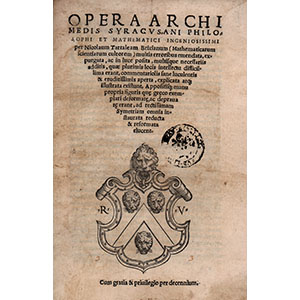
We have already seen in the episode on hydrostatics how Archimedes work On Floating Bodies, informed and influenced the work of both Tartaglia’s one time student, Giambattista Benedetti (1530–1590), and the engineer, Simon Stevin (1448–1620) in the Netherlands in their work on hydrostatics and on the laws of fall. As I have also outlined in great detail, Archimedes work on statics had a major influence on the Italian mathematicians of the so-called Urbino School. Federico Commandino (1509 – 1575), Guidobaldo dal Monte (1545 – 1607), and Bernardino Baldi (1553–1617), the first two also producing and publishing new improved translations of various of Archimedes work. Once again Simon Stevin also produced a major, Archimedes inspired work on statics.
These mathematicians had, directly inspired, and heavily influenced by the work of Archimedes, now produced, in several fields, work that was indisputably scientia or knowledge by the use of mathematics and thus instigated the turn from Aristotelian philosophical knowledge to the mathematisation of knowledge production and this movement began to spread in the seventeenth century.
The Urbino School, in particular dal Monte, who was his patron, influenced Galileo, who openly declared that he had in his natural philosophy replaced Aristotle with Archimedes. Galileo’s pupils Vincenzo Viviani (1622–1703) and Evangelista Torricelli (1608–1647) followed his lead on this. Stevin’s work, written in Dutch was translated into Latin by Willebrord Snel (1580–1626) and heavily influenced the French natural philosophers such as, Marin Mersenne (1588–1648), who together with Pierre Gassendi (1592–1655) led the informal academic society, the Academia Parisiensis, a weekly gathering from 1633 onwards, which included the most important French, English and Dutch natural philosophers of the period. This group was of course also influenced by the work of Galileo.
It was not the thoughts of a philosopher, Plato, that pushed Aristotelian philosophy from its throne on the medieval university as the purveyor of factual knowledge of the real world and replaced it with a mathematics-based system, but the work of a mathematician, Archimedes. As the century progressed Euclid and Archimedes would in turn be replaced by the algebra-based analytical mathematics that would eventually develop into calculus, although also here the method of exhaustion first developed by Eudoxus of Cnidus (c. 408–c. 355 BCE), but popularised by Archimedes was the basis of the integral calculus half of the new mathematics.